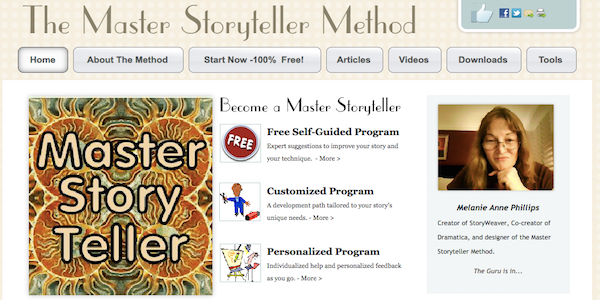
A whole flock of Story Gurus (myself included) will tell you that stories have structure. Therefore, if you learn that structure you’ll improve your stories. Ostensibly, this will lead to fame, riches, a keen sense of accomplishment, and the unparalleled pleasure of the act of writing itself.
But is that true? Do stories have a structure? And even if they do, is there really any way to figure out what it is? Based solely on the number of competing theories, one might suspect that either stories don’t have structures or that even those who spend their entire lives trying to figure it out, can’t!
But there’s an alternative explanation – actually, a couple of them, and I’d like to share those with you now….
First of all, we have two questions:
1. Do stories have structures?
2. Can we ever really define what they are?
We’ll take them in turn.
Stories have structure. There, I said it. But now I have to prove it. And so I’ll say something else – not all written works are stories. And many of those other kinds of writing don’t have any structure at all. In other words, when people use the term “stories” in a casual way to mean any durn thing an author writes, well, then it is impossible to agree if stories have structure or not, ’cause some of them do and some of them don’t.
So the first thing we need to do is divide what we commonly think of as stories into two different camps. One includes all those written works that have structure and the other contains all the written works that don’t.
Now its pretty silly to say that that any written work could exist that has absolutely no structure. So I’ll go back a bit on what I said. Even a dictionary has structure, sentences have structure, and paragraphs follow the conventions of a particular gramatic form.
Every random collection of words with no intent behind them has structure. Why? As a species we see animals in clouds, mythic figures in glops of stars, and impose images on inkblots. From this we can surmise that the human mind tries to impose structure even on chaos. No matter what written work we might examine, no matter how fluid and free-form, there will be those who see a clear structure in the thing.
Let’s no be so picky. If you see structure in everything, then you already don’t think structure is a myth so my work is done here. But when most people think of structure in regard to writing, they are not talking about grammar or form. Rather, they have “formula” in mind. In other words, writers tend to equate structure with a rigid formula for telling a story – a list of requirements that must be met or the story will suffer.
So let’s go with that and refine our first question to read as follows:
1. Is there a rigid formula that must be followed to write a successful story?
No.
Wait a minute! Didn’t I just say “Stories have structure,” and now I’ve turn ’round and proclaimed , “No they don’t.”
Yes. Yes I did. And here’s why…. Stories have structure but that structure isn’t a rigid formula; it is a flexible form. That’s why its so hard to see – its never quite the same from one story to the next.
Yet, the elements remain the same: There are Characters, Plot and Theme. There are personal problems, and goals, and moralities. There are acts, and scenes and beats. We feel their necessity, we sense their consistency, yet these are just impressions. The actual nature of the structure remains elusive, seen only in glimpses in shadows, never showing itself clearly.
This is not surprising. It is like the old story of three blind men trying to describe an elephant: One feeling the trunk, “It is long and twisty like a snake”. Another, examining the leg, “It is tall and round like a tree.” The last, exploring the ear, “It is thin and flat like a rug.”
Story Gurus are each describing the same elephant in the room. Each is seeing a portion of the truth. While the descriptions seem in conflict or at least disparate, they are really just parts of the same beast.
I’m not here to promote my particular view of the critter. Rather, I figure my “truth” is also just another facet of a greater “Truth”. So in regard to the questions I posed, let me answer like this:
Yes, stories have structure. No, we’ll never see the whole of it. But the more story gurus you study, the more sides you see of what stories are, what they can be, how they work, and how to build them.
Embrace what works for you, reject what feels wrong, and strive to develop your own take on story structure, always remembering that no matter how clearly it appears to you, its probably just another piece of the puzzle.
The bottom line is apply structure only in ways that enhance your productivity and your enjoyment in pursuing your craft. Anything else has no more place in your writing life than a rigid structure can be applied to every kind of story.




